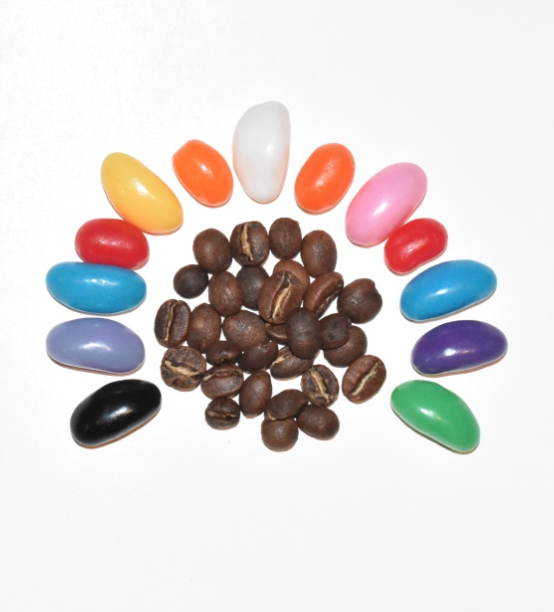Coffee tasting, like wine tasting, can seem pompous and overwhelming as an onlooker or if you’re just starting out on your coffee journey. If you told me 10 years ago that I would taste lemon creams and smell jasmine blooms in a cup of coffee, I would’ve told you you were straight up crazy. But we're here to tell you that coffee tasting can be fun and you will taste some things you never thought possible!

The gist of this article is: Keep it simple, stupid! Stick to the basics. With over 800 unique aromatic compounds contributing to the flavours and aromas found in coffee, it’s very easy to get overwhelmed with the countless ways coffee profiles are identified and described. It’s best to take a few steps back and start off focusing on the five basic tastes: sweet, sour, salty, bitter, and umami (also known as savoury). Take a sip of your coffee, and ask yourself if the coffee has sweetness, sourness, bitterness, etc… Just look for the presence of those tastes to start, and once you’re able to confidently identify them, start asking yourself how sweet, sour, bitter, salty, or savoury the coffee is. Eventually, as you feel more confident with these basic tastes, you’ll be able to take it a step further and ask yourself what kind of sweetness (or sourness or bitterness, etc...) you’re tasting. For example, you can go from tasting that a coffee has sweetness, to tasting that it has a chocolate sweetness, or that it not only has sourness, but a lemon sourness more specifically.
Professionals use tools like the SCA Flavour Wheel (click here for a run down on how to use it) and Le Nez du Cafe kit to improve the senses for tasting, but those are super intense and often inaccessible. One of the best pieces of advice I was ever given in tasting coffee, was to completely ignore anything you’ve learnt about flavour descriptors or stop stressing about not tasting exactly what you’re ‘supposed to’ taste. What?! Seems completely counter-intuitive, right? But let us explain. As your palate becomes more refined – through active tasting, and building your own kind of flavour memory library – you’ll need external reference points less and less. Ignoring the ‘official’ flavour descriptors, either printed on your bag of beans or listed on your cafe’s menu, gives you an opportunity to discover them for yourself, and the more often you challenge yourself to find those flavours, the better developed your palate will become.
Also you don’t have to test your skills on black coffee only. Milk beverages can be the most fun! When we were in Seoul for the World Barista Championship, Winston Thomas’ milk beverage tasted like strawberry yogi-sip. We were like, all South Africans will know this flavour, but we had to use strawberry drinking yoghurt and hope the judges had all tried that at some time in their lives! It was so distinct though, all of us in the team couldn’t believe it! When Lovejoy Chirambasukwa won the National competition in 2013 his cappuccino tasted like dried apricots and cream and my taste buds were in heaven. Of course at that level (the level of coffee competitions) the coffees being used are the best of the best, but ALL coffees are unique and have there own flavours. It’s pretty fun to get into.
African coffees in particular can burst with fruity nuances. The Ethiopians are usually characterised by bright florals and citrus fruits, while the Kenyans bring that deep, red berry and chocolate to the table. There are so many to explore (so ask your barista to tell you what’s in the hopper next time you visit - they will be glad to see you’re interested!) But how do you start to pick up these flavours?
Well, here’s a wacky idea: Grant Harrison of Specialty Coffee Exchange suggests you use jelly beans to train your palate! You can pick up that the white jelly bean is litchi, orange is, well, orange, yellow is lemon. But they all taste like jelly beans right? It’s the same for coffee, they all taste like ‘coffee’ but there are definitely some distinct flavour nuances, and it doesn’t matter if you don’t get the same flavour descriptors as someone next to you, part of the fun is discussing what each person tastes! We’ve sometimes tasted some way out flavours - things that remind us of bovril, leather and malt (like at boarding school when the matron spooned each child a big treacle tasting heap of malt in winter time!) Other times it’s grassy, lime and green apple (my sour glands at the back of my throat are pumping as I write this!)
No matter if you’re just beginning and are eager to learn or if you’ve been tasting coffees from around the world for a while now, the more you taste, the better you get as you build your taste bud’s memories!
So break out the jelly beans and get tasting!